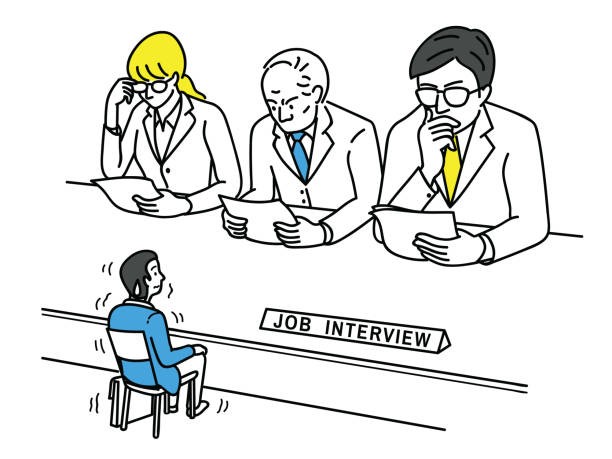Or at least, it should be. Whilst all other business processes innovate at pace, the way we recruit talent is beyond antiquated. It’s ironic that the way we acquire our most important assets (our people) is a process that never seems to change – it has hardly changed in centuries. We sit across a desk from someone (in-person or virtually) asking a series of random questions that we hope will provide real insights into a person’s capabilities and potential.
Most business decisions are data-led; we look for evidence to support our decision-making processes. Generally, that is forsaken with interviewing, and we are led by subjective emotions, biases and social cues.
Of course, there are ways to improve the interview process, many of which are already used by organisations to increase objectivity and inclusion. These include:
structured competency, values and technical questions;
same questions in the same order for all candidates;
utilising a scoring matrix to compare candidate answers objectively;
panel interviews (where panellists score the interview independently).
However, with the risk of being crude, are we just polishing a turd? It seems to us that we are trying to improve a fundamentally flawed process rather than seeking better solutions.
The outcome of most interviews is swayed by questionable judgements and unconscious bias – how we get along with the candidate (affinity), what others think of the candidate (conformity), the candidate’s previous experience (confirmation), and any specific highlights or lowlights (halo and horns effect). We still hear about hiring decisions being made on team or culture fit – these intangible, ambiguous terms that really mean “you aren’t like us”.
The outcome of this old-fashioned approach means that people are hired for completely the wrong reasons. We seek conformity and similarity, and exclude candidates who might think differently, bring new ideas and challenge the status quo. This approach is dangerous as it reinforces the homogeny of existing teams and creates the perfect conditions for Groupthink.
Furthermore, by hiring the same types of people in the same ways, we ignore the cognitive gaps that might be present in the existing team – we don’t improve, we just stay the same – and in the digital age, that’s akin to moving backwards. Everyone in business talks about creating a culture of innovation, but most aren’t prepared to take the steps that make that more likely.
What’s the solution?
Are we advocating consigning interviews to the corporate dustbin? Yes. And no. Transformation is hard and expecting managers and leaders to change the way they have always done things takes time. And evidence.
The first step is to ensure that if we do conduct interviews, they are structured in such a way that the outcomes can be measured in an objective manner. That means using the competency, scoring approach highlighted above. The candidates with the best scores go to the next round regardless of how much the interviewer ‘likes or dislikes’ them.
Second, lets better utilise behavioural assessments. These assessments (such as The Myers-Briggs Company, Thomas International or The McQuaig Institute for example) are commonly used in hiring processes but often for the wrong reasons, usually to benchmark against existing talent or make decisions about which candidates are more likely to ‘fit in’. The tests themselves are generally based on Karl Jung’s ‘personality types’ and are not perfect – even Jung recognised the personality types he observed were ‘rough tendencies’ but they can be useful. A better utilisation of these assessments is to understand how your existing team thinks and acts, what their strengths are, how they solve problems and where the potential cognitive gaps are. We want these gaps to be narrowed or filled to create well rounded, inquisitive teams that have a degree of cognitive friction; teams of people that are willing to challenge one another (respectfully) and have different types of experiences create the conditions for innovation.
We also advocate the use of emotional intelligence testing (such as RocheMartin). Emotional intelligence (EQ) is a way of describing our ability to process and analyse emotions and feelings in ourselves and others. This is a counterpoint to Intelligence Quotient (IQ) which is a way of describing how we use logic and problem-solving skills to analyse data and information. EQ has 4 key attributes:
self-awareness
self-regulation
social-awareness
relationship management.
These attributes can be tested (and unlike IQ, we can improve our EQ over time) and measured. It has been shown in numerous studies that EQ is a more reliable measure of potential success than IQ.
Finally, we believe that utilising task testing, working interviews and gamification provides a better understanding how an individual will perform in a specific role. An interview focusses on what the candidate has done previously and how they describe their experience. It is not a guarantee of what they are capable of now, and what they could do in the future. Lets see how people perform in a task that actually reflects the job they are being assessed for.
What is the ultimate aim of the interview? Surely it is to hire talent that is aligned to tasks based on how they think and behave, and that they are suited to. Advancements in neurology and technology will improve our understanding about what individuals are best at and will act as a greater catalyst for efficiency, effectiveness and opportunity, both for individuals and organisations.
Increases diversity
A clear benefit of focusing on the innate abilities and potential of the individual and the needs of the business is an increase in inclusion. Essentially, what a person has done before has less relevance than what they will do in the future. When recruiting is less reliant on interviews, the opportunity to widen the talent pool is apparent. We have significantly less bias in the process and when we actively seek variety in talent, we create teams with a wide diversity of characteristics, thought and experiences, reducing homogeny and increasing innovation.
Who is brave enough to take the plunge?
